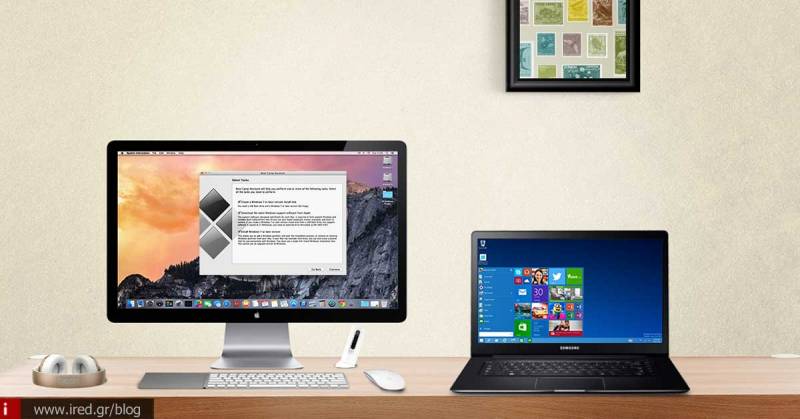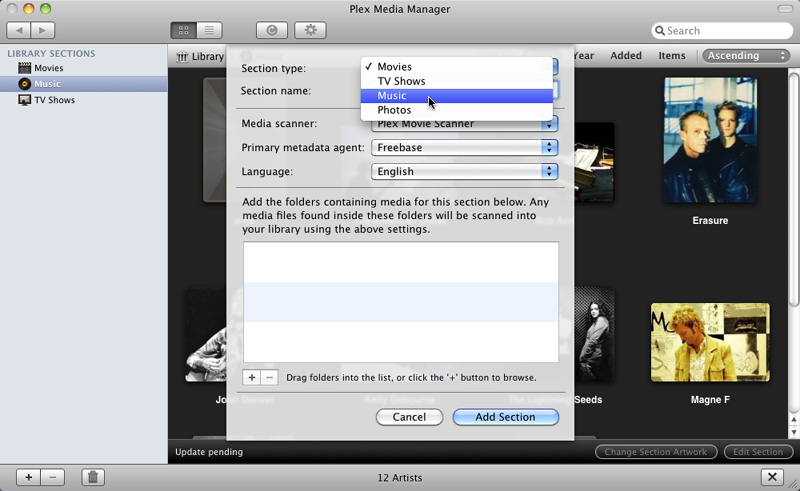Windows Media Installer For Mac
If you try to create a regular USB installer using Boot Camp Assistant, you’ll receive an error telling you there’s not enough space on the disk. This is a confusing error that doesn’t make a lot of sense if, like me, you’re using a 32GB USB stick. The solution is to create your own USB installer and ditch FAT32 entirely. Download Everything You Need First, grab yourself a legitimate copy of Windows from Microsoft. You can download Windows 10 on website.
Boot Camp Assistant guides you through installing Windows on your Mac. Open this app from the Utilities folder inside the Applications folder. Then follow the onscreen instructions to repartition your startup disk and download related software drivers for Windows.
Windows Installation Media For Mac
For security reasons, you should only ever download Windows from Microsoft. You’ll also need Apple’s drivers for Windows. The downloads available on are out of date, so download them using your Mac:. Launch Boot Camp Assistant. In the menu bar click Actions Download Windows Support Software. Select a location to save the file, then wait for the download to complete.
Now you’re ready to move on and create an installer. If this sounds like too much for you, check out other without a full install.
Create Your Own Bootable USB Installer Microsoft recommends an install medium of 5GB or larger. Some users recommend using an 8GB USB 2.0 drive. I used a 32GB USB 3.0 drive with no problem, but your mileage may vary.
Insert your USB drive and launch Disk Utility. Select your drive from the list on the left and click Erase (make sure there’s nothing on it you haven’t backed up). From the dropdown box, select exFAT as your file system.
Give your USB drive a name like WININSTALL and click Erase. Next, double-click the Windows ISO you downloaded to mount it. The image you mounted should open automatically (otherwise look in your Finder sidebar). Click and drag to select all the Windows 10 installation files, then copy them ( Cmd + C). Now paste those files onto the USB drive you just created ( Cmd + V).
Navigate to the drivers that you downloaded earlier. Copy the contents of the WindowsSupport folder to the root directory of your USB installer.

Don’t just drag the WindowsSupport folder to the drive—copy the contents instead. Your Windows 10 installation USB is now ready.
If you run into issues, check out. Prepare Your Mac’s Internal Drive With your USB drive still connected, launch Boot Camp Assistant again. Click Continue to begin the process, then uncheck Create a Windows 7 or later install disk and Download the latest Windows support software from Apple. You’ve already done both of these.
Leave Install Windows 7 or later version checked, then click Continue. On the next screen you’ll be asked to assign space to your Windows partition. Click and drag the slider (or click Divide Equally) to decide how this space is shared between your macOS and Windows partitions. Click Continue when you’re ready to start the process, then input your administrator password. MacOS will start partitioning your drive. Input your administrator password one more time, then your Mac will restart and begin the Windows installer.
If you receive an error about missing Windows support software, make sure you’ve copied the contents of the WindowsSupport folder you downloaded to the root of your USB drive. If folders like $WinPEDriver$ and BootCamp aren’t in the root USB folder, Boot Camp Assistant will refuse to repartition your drive. Now Install Windows on Mac Your Mac should restart and launch the Windows installer automatically. If it does not, or you canceled for some reason, you can restart the process:. Insert your Windows 10 USB installer. If your Mac is running, restart it. While your Mac boots, press and hold Option on your keyboard to reveal the boot menu.
Select EFI Boot and click on the arrow to begin the installer. Be patient while the installer loads. When prompted for a product key, you can click I don’t have a product key to install Windows 10 regardless. You’ll also need to select a version of Windows to install.
Eventually, you’ll need to specify where you want to install Windows. You should see a partition called BOOTCAMP in the list. Click on it, then click Format and proceed. Once you’ve formatted the partition, you should be able to click Next and continue installing Windows. The installer will restart your Mac a few times while the installation takes place. Make a cup of coffee and sit back while it completes.
Configure Windows and Install Drivers Eventually Windows 10 will restart and you’ll be asked for some more information, including your region and keyboard layout. It’s likely your wireless adapter won’t work with Windows natively, so when you’re prompted to connect to a network, click Skip for now. Now create a user account, select a password, add, and wait for Windows to finish configuring your desktop.
After a few restarts, Windows will be ready for use. The first thing you should see is the Boot Camp installer. Click Next followed by Install to begin the driver installation process.
Its normal for your screen to flicker during this installation process. Once the drivers have installed, you’ll see a prompt to restart Windows. By the time you’ve rebooted Windows, everything should work as expected. You’ll be able to connect to a wireless network, scroll with two fingers on the touchpad, use the media keys to adjust screen brightness, and so on. Windows 10 on Mac: The Best of Both Worlds Many Mac users buy Apple computers primarily because of the macOS user experience, but the convenience of having both Windows and macOS is undeniable. It’s a shame that Boot Camp Assistant doesn’t work quite like it should, but there’s almost always a workaround to any such issues. Now that you’ve got Windows 10 up and running, why not check out some of the?
Windows Media Player 9 Mac
Read the full article.
Before you start, you’ll need a USB 3.0 flash drive with at least 8GB of storage. A USB-C flash drive might be best, especially if you’re a MacBook user. Here are a few USB-C-enabled flash drives found on Amazon:.
Because this process will erase the contents of the drive, ensure that there is nothing stored on the drive that you need before beginning. A USB-C flash drive makes things easy for MacBook users How to create a bootable macOS Mojave 10.14 USB install drive Step 1: Download macOS Mojave.
Once Mojave 10.14 officially launches, you’ll be able to download it straight from the Mac App Store. Until then, you’ll need to access the Mojave beta from, or (once available) via. Step 2: Once macOS 10.14 Mojave is downloaded, close the installer that appears using Command (⌘)+Q.
Install Windows On Mac Free

Video walkthrough Step 3: Open Finder → Applications and right-click on Install macOS 10.14 Beta and select Show Package Contents. Step 4: Open Contents → Resources. Step 5: Open a Terminal window via Applications → Utilities → Terminal. Step 6: In the Terminal window type sudo followed by a space. Step 7: Drag createinstallmedia to the Terminal window from the Finder location in Step 4. Step 8: Type -volume followed by a space.
Step 9: Open Finder → Go → Go To Folder Step 10: In the Go to the folder box type /Volumes and click Go. Step 11: Connect your USB drive to your Mac, and it should appear in the Finder window. Step 12: Drag the USB flash drive volume into the Terminal window. Step 13: Press Return on the Keyboard to submit the full command.
Step 14: Type a ‘y’ to continue when prompted, and press return on the keyboard. Step 15: The install process will start by erasing the contents of your USB drive and copying the installer files to the drive. The entire process can take a while (around 20-30 minutes). You’ll need to exercise patience as the install process proceeds. Once the process is completed, you can use the USB flash drive to boot to the macOS Mojave 10.14 installer. Simply connect your USB flash drive, and restart your Mac while holding the Option (⌥) Key.
Select the macOS Mojave Installer to get started. What’s changed? The -applicationpath flag that was used in is now deprecated. Including the flag will show the following warning message prior to creating the boot disk: WARNING: '-applicationpath' is now deprecated.

Note: you may see a dialogue menu inquiring about the SetFile command requiring command line developer tools. Choosing Not Now will not disrupt the creation of the USB install drive. For a hands-on look at what’s new in macOS Mojave, be sure to check out our walkthrough of over.